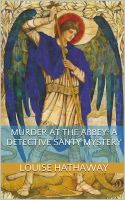Many times when I've told people that I was an
English Major, I am answered by a groan and someone saying, “I hated that class
in school.” Why? They often answer, “Too much memorization of
stupid rules.” I’d like to stick up for
those “stupid rules”: I think that they are important because misuse of
punctuation marks can lead to confusion; and isn't writing ultimately about
communicating, not confusing? Here’s the
best description of the importance of these rules: “Punctuation marks are the traffic signals of
language: they tell us to slow down, take notice, or stop.” This quote is taken from Lynne Truss’s book, “Eats,
Shoots and Leaves.” She provides
several funny examples of misused punctuation.
Consider her title. It was taken
from a sentence she had read that was presumably was about the eating habits of
pandas; but the way it’s written, it makes you think that the panda had a gun:
he ate his food, shot his gun, and then walked away. Obviously, that’s not what the writer
intended and there shouldn't be a comma in his description. Frank McCourt, the noted writer and humorist,
said that Lynne Truss should be nominated for sainthood; and he should know
about the need for rules about punctuation: he taught English and most likely saw
several examples of bad writing over the years.
Here’s a funny example from her book about the
misuse of apostrophes: she had seen a sign about a large play area for kids
that said: “Giant Kid’s Playground.”
Would you want your child playing with the kid of a giant? I sure wouldn't.
Do you overuse exclamation points in your
writing? Truss quotes F. Scott
Fitzgerald’s description of them. He
says, “An exclamation mark is like laughing at your own joke.” She says that they are “like a big
attention-deficit brother who gets over excited, breaks things, and laughs too
loudly.” This is definitely something we
should keep in mind in our writing. I do not want to over-use them.
I write books with my husband and he’s asked me for
help in knowing where he should use commas.
I tell him to imagine saying a sentence out loud, and whenever you
pause, you probably will need a comma or some other punctuation mark. Like Lynne Truss says, “they tell us when to
slow down.”
Have you ever wondered when you should use a
colon? Here’s her rule: “they deliver
the goods that have been invoiced by the preceding words.” I use colons a lot in my writing and I love
this rule. Here’s an example she uses
for the correct way to use colons: in “The Hound of Baskerville”, Sherlock
Holmes says, “This much is clear Watson: it was the baying of an enormous
hound.” The writer should imagine saying
a delighted and satisfying, “Yes”, where the colon comes. Colons are nearly always preceded by a complete
sentence and are used to precede lists.
When should you use semi-colons?
They are used to combine two related complete sentences when there is no
conjunction (and, or, nor, but).
I wonder if someday soon, because of text messaging
and Twitter, things like good grammar, spelling, and punctuation will be seen
as a dying art; like using a fountain pen and going to the post office to buy
commemorative stamps to mail your correspondence and cards. In my own fiction writing, I use a lot of
sentence fragments because I think they make the paragraph more dramatic; so,
there is a time and place to bend the rules; but I liked to think that when I
read articles from Time Magazine or Smithsonian, the writers will continue to use sentences that deliver the goods and tell me when to slow down, take
notice, or stop. I have to admit,
though, that misuse of punctuation marks can lead to some hilarious and
unintended meanings which are always fun to catch.
